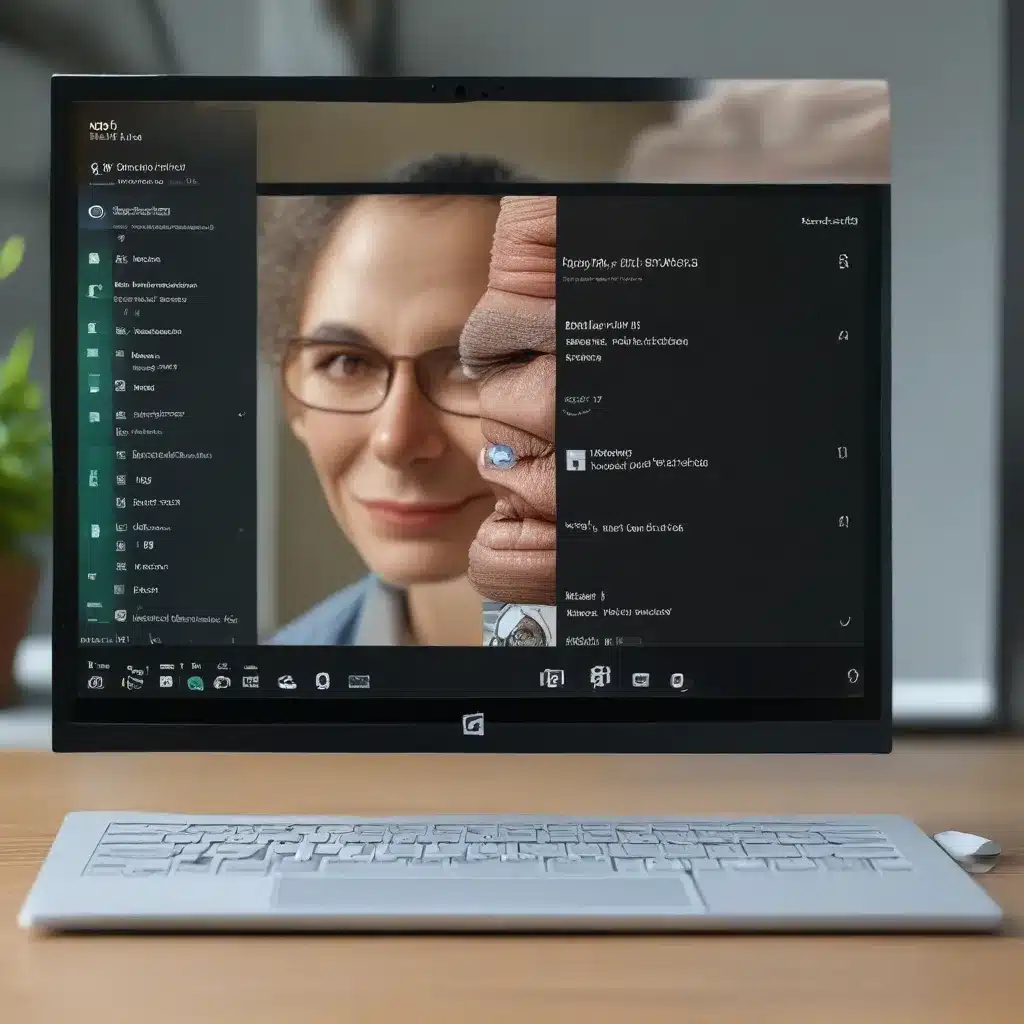
As someone who’s been using computers since the days of floppy disks and dial-up modems, I’ve seen my fair share of operating system updates over the years. But when Microsoft unveiled Windows 11, I have to admit, I was intrigued. Not just by the sleek new look and feel, but by the impressive array of accessibility features they’ve packed into this latest release.
Seeing is Believing: Improved Visual Accessibility
One of the standout accessibility features in Windows 11 is the enhanced support for low vision and light sensitivity. With the new Dark and Contrast themes, you can reduce screen brightness, increase contrast, and never sacrifice aesthetics or quality. Microsoft’s own website describes it as a way to “adjust for light and color sensitivity” – perfect for those of us who spend long hours staring at a screen.
And if that’s not enough, Windows 11 also allows you to personalize your screen experience with customizable cursor sizes, text scaling, and color filters to accommodate color blindness. It’s like having your own personal assistant to tweak every little detail until your eyes are happy.
Hearing is Believing: Improved Audio Accessibility
But it’s not just the visuals that have received a boost – Windows 11 also packs some impressive audio accessibility features. For those who are hard of hearing or prefer to keep the volume low, the new Mono Audio option combines the left and right stereo channels into a single channel, ensuring you don’t miss a beat.
And let’s not forget the improved captions feature, which allows you to customize the text size, font, color, and background to suit your needs. Whether you’re watching a movie, TV show, or video conference, you can now keep up with the dialogue without straining your ears.
Interacting with Ease: Improved Mobility and Input Accessibility
But Windows 11’s accessibility features don’t stop there. The operating system also caters to those with mobility challenges, offering a range of input options to suit your needs. From the enhanced on-screen keyboard and voice typing capabilities to the eye-tracking-enabled Windows 11 eye control, Microsoft’s support page has you covered.
And for those who prefer the good old-fashioned keyboard, Windows 11 has a wealth of keyboard shortcuts and touch gestures to make navigating your PC a breeze. It’s almost like having a personal chauffeur to drive you around your computer.
Focusing on Productivity: Improved Cognitive Accessibility
But perhaps the most impressive aspect of Windows 11’s accessibility features is the way they cater to cognitive needs. With the new Immersive Reader in Microsoft Edge, you can enhance your online reading experience by removing visual clutter, customizing spacing, and adjusting color and zoom settings. And the Focus Sessions feature, which turns on Do Not Disturb and integrates with your clock, is a game-changer for those of us who struggle to stay on task.
It’s almost as if Microsoft has been reading my mind (and yours, too, I’m sure) and designing these features specifically to address the challenges we face in our daily digital lives. And the best part? You can find all of these accessibility gems right on the Microsoft website, just waiting to be discovered.
So, if you’re like me and you’ve been looking for ways to make your computing experience a little more, well, accessible, then Windows 11 might just be the upgrade you’ve been waiting for. And who knows, maybe you’ll even discover a feature or two that you never knew you needed. After all, that’s half the fun of exploring new technology, isn’t it?
Oh, and did I mention that you can find ITFix.org.uk, a fantastic computer repair service in the UK, if you ever need a little extra help with your Windows 11 setup? Just a friendly reminder, in case you ever find yourself in need of a little technical assistance.












